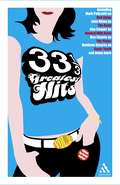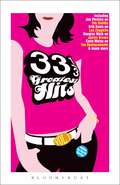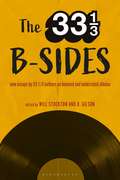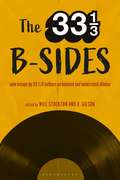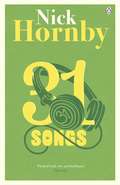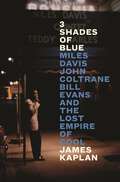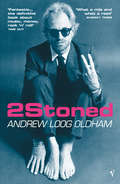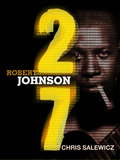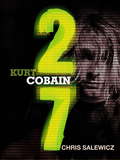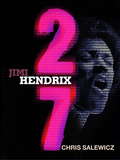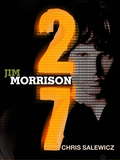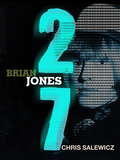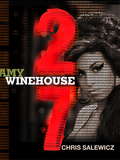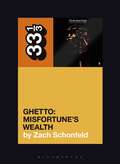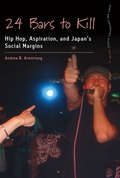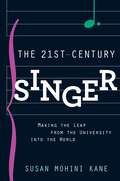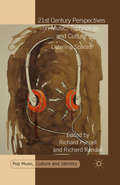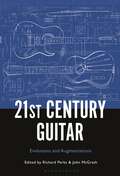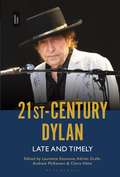- Table View
- List View
33 1/3 Greatest Hits, Volume 2 (33 1/3 #Volume 2)
by David BarkerThe second compendium of extracts from Continuum's acclaimed and successful 33 1/3 series, Volume 2 features 20 sharp, savvy and very different writers' takes on albums by Neutral Milk Hotel, Sonic Youth, My Bloody Valentine, David Bowie, the Pixies, the Beastie Boys, Nirvana, R.E.M, the Band and many more. A perfect gift for the music lover in your life!
33 1/3 Greatest Hits, Volume 1 (33 1/3)
by David BarkerThe writings in this book are extracted from volumes 1 through 20 of our 33 1/3 series - short books about individual albums. In here you'll find a wide variety of authors, albums, and approaches to writing about those albums. So sit back, put on your headphones, cue up your favourite songs, and let our writers transport you to a time when: Dusty Springfield headed south to Memphis to record a pop/soul classic; The Kinks almost fell to pieces, and managed to make their best album while doing so; Joy Division and their mad, brilliant producer created a debut record that still sounds painfully hip today; James Brown mesmerized a sell-out crowd at the Apollo, in the midst of the Cuban Missile Crisis; The Rolling Stones shacked up in the South of France and emerged with one of the best double-albums ever; The Ramones distilled punk rock into its purest, most enduring essence... 33 1/3 Greatest Hits, Volume 1: it's like a compilation album, without the filler.
33 1/3 Greatest Hits, Volume 1 (33 1/3 #Volume 1)
by David BarkerThe writings in this book are extracted from volumes 1 through 20 of our 33 1/3 series - short books about individual albums. In here you'll find a wide variety of authors, albums, and approaches to writing about those albums. So sit back, put on your headphones, cue up your favourite songs, and let our writers transport you to a time when: Dusty Springfield headed south to Memphis to record a pop/soul classic; The Kinks almost fell to pieces, and managed to make their best album while doing so; Joy Division and their mad, brilliant producer created a debut record that still sounds painfully hip today; James Brown mesmerized a sell-out crowd at the Apollo, in the midst of the Cuban Missile Crisis; The Rolling Stones shacked up in the South of France and emerged with one of the best double-albums ever; The Ramones distilled punk rock into its purest, most enduring essence... 33 1/3 Greatest Hits, Volume 1: it's like a compilation album, without the filler.
The 33 1/3 B-sides: New Essays by 33 1/3 Authors on Beloved and Underrated Albums
by Will Stockton D. GilsonIf given another chance to write for the series, which albums would 33 1/3 authors focus on the second time around? This anthology features compact essays from past 33 1/3 authors on albums that consume them, but about which they did not write. It explores often overlooked and underrated albums that may not have inspired their 33 1/3 books, but have played a large part in their own musical cultivation. Questions central to the essays include: How has this album influenced your worldview? How does this album intersect with your other creative and critical pursuits? How does this album index a particular moment in cultural history? In your own personal history? Why is the album perhaps under-the-radar, or a buried treasure? Why can't you stop listening to it? Bringing together 33 1/3's rich array of writers, critics, and scholars, this collection probes our taste in albums, our longing for certain tunes, and our desire to hit repeat--all while creating an expansive "must-listen" list for readers in search of unexplored musical territories.
The 33 1/3 B-sides: New Essays by 33 1/3 Authors on Beloved and Underrated Albums
If given another chance to write for the series, which albums would 33 1/3 authors focus on the second time around? This anthology features compact essays from past 33 1/3 authors on albums that consume them, but about which they did not write. It explores often overlooked and underrated albums that may not have inspired their 33 1/3 books, but have played a large part in their own musical cultivation. Questions central to the essays include: How has this album influenced your worldview? How does this album intersect with your other creative and critical pursuits? How does this album index a particular moment in cultural history? In your own personal history? Why is the album perhaps under-the-radar, or a buried treasure? Why can't you stop listening to it? Bringing together 33 1/3's rich array of writers, critics, and scholars, this collection probes our taste in albums, our longing for certain tunes, and our desire to hit repeat--all while creating an expansive "must-listen" list for readers in search of unexplored musical territories.
31 Songs
by Nick Hornby'I decided that I wanted to write a little book of essays about songs I loved ... Songs are what I listen to, almost to the exclusion of everything else.'In his first non-fiction work since Fever Pitch, Nick Hornby writes about 31 songs that either have some great significance in his life - or are just songs that he loves. He discusses, among other things, guitar solos and losing your virginity to a Rod Stewart song and singers whose teeth whistle and the sort of music you hear in Body Shop.'The soundtrack to his life ... a revealing insight into one of Britain's most popular writers' Evening Standard
3 Shades of Blue: Miles Davis, John Coltrane, Bill Evans & The Lost Empire of Cool
by James Kaplan1959 saw Miles Davis, John Coltrane, Bill Evans, and the other members of Miles’s sextet come together to record the seminal jazz album of all time Kind of Blue. 3 Shades of Blue is a magnificent, blended biography on the meandering paths which led Miles, Coltrane and Evans to the mountaintop of 1959 and the aftermath. It’s a book about music, business, race, addiction and the cities that gave jazz its home; from New York and LA to Philadelphia, Chicago and Kansas City. Kaplan meditates on creativity and the great forebears of this golden age who would take the music down strange new paths. Above all, this is a book about three very different men – their struggles, their choices, their tragedies, their greatness. The tapestry of their lives is, in Kaplan’s hands, an American Odyssey, with no direction home.
2Stoned
by Andrew Loog OldhamIn 1963, in a south London hotel, Andrew Loog Oldham discovered an unknown rhythm and blues band called the Rolling Stones and became their manager and producer; by 1967 they had achieved worldwide celebrity, been arrested in a notorious drugs raid and split with the manager that made them. 2Stoned is the remarkable record of these years, when Oldham's radical strategies transformed them into the Greatest Rock 'n' Roll Band That Ever Drew Breath. In his first book, Stoned, Oldham recorded his early years and the meeting with the Stones that changed all their fates; 2Stoned is the story of what followed.
27: Robert Johnson (The 27 Club Series #7)
by Chris SalewiczRobert Johnson was, according to Eric Clapton, "the most important blues singer that ever lived." An itinerant street musician, with a weakness for whisky and women, his is a life of pure legend - the man who sold his soul for the devil, and thereby invented modern music.Precious little is known about his 27 years, or the circumstances of his death, and even the site of his grave is contested. In this mini-biography, acclaimed music critic Chris Salewicz investigates the truth behind the myth, evoking an incisive profile of an enigmatic figure who, with just 29 songs, changed popular music for ever.27: Robert Johnson is the final part of a series of short music ebooks. Other titles in the series include 27: Brian Jones, 27: Jimi Hendrix, 27: Janis Joplin, 27: Jim Morrison, 27: Kurt Cobain and 27: Amy Winehouse.
27: Kurt Cobain (The 27 Club Series #2)
by Chris SalewiczKurt Cobain, Nirvana frontman, died aged just 27. In this insightful mini-biography, respected music critic Chris Salewicz examines Cobain's journey from sensitive loner to generational icon. Salewicz scrutinizes Cobain's tormented inner life, his tempestuous relationship with Courtney Love, and the importance of his cultural legacy.27: Kurt Cobain is the second in a series of exclusive music ebooks, an ambitious project examining the perils of genius, celebrity and excess. Other titles in the series include 27: Amy Winehouse, 27: Jimi Hendrix, 27: Jim Morrison and 27: Janis Joplin.
27: Jimi Hendrix (The 27 Club Series #4)
by Chris SalewiczJames Marshall 'Jimi' Hendrix is the most famous and perhaps the most innovative guitarist in music history. He died aged 27.In this thought-provoking mini-biography, acclaimed author Chris Salewicz attends not just to Hendrix's virtuoso skill, but also to his enigmatic and unpredictable character. He explores Hendrix's status as psychedelic talisman and fashion icon, detailing the attitude and style that informed his legend.27: Jimi Hendrix paints an intimate portrait of a man struggling with fame and substance abuse while mesmerizing the world. 27: Jimi Hendrix is the fourth in a series of exclusive music ebooks, an ambitious project examining the perils of genius, celebrity and excess. Other titles in the series include 27: Amy Winehouse, 27: Kurt Cobain, 27: Brian Jones, and 27: Jim Morrison.
27: Jim Morrison (The 27 Club Series #6)
by Chris SalewiczJim Morrison, musician, singer and poet was found dead, the victim of a suspected heroin overdose, in a Paris apartment bathtub in 1971. He was 27.Morrison was a talented, charismatic, wild-tempered cultural cipher. He struggled to cope with his exalted status and his death, officially from heart failure, remains shrouded in mystery.In 27: Jim Morrison, acclaimed music critic Chris Salewicz pays homage to Morrison as a rock icon, whilst acknowledging the dark side of this conflicted character. It is the sixth title in a series of exclusive music ebooks, an ambitious project examining the perils of genius, celebrity and excess. Other titles in the series include 27: Amy Winehouse, 27: Kurt Cobain, 27: Jimi Hendrix and 27: Janis Joplin.
27: Janis Joplin (The 27 Club Series #5)
by Chris SalewiczJanis Joplin, singer-songwriter, counterculture icon, the Queen of rock and roll, died aged just 27. During a short four-year career, blighted by alcoholism and drug abuse, she changed the face of music, carving out opportunities for a generation of female talent. Her powerful, raw vocals touched fans of folk music, blues and soul alike, with recordings such as 'Me and Bobby McGee', 'To Love Somebody' and 'Mercedes Benz' widely recognized as classics of their era.In 27: Janis Joplin acclaimed author Chris Salewicz examines Joplin's troubled and unconventional existence, and explains her profound musical influence. This is the fifth in a series of exclusive music ebooks, an ambitious project examining the perils of genius, celebrity and excess. Other titles in the series include 27: Amy Winehouse, 27: Kurt Cobain, 27: Brian Jones, and 27: Jimi Hendrix.
27: Brian Jones (The 27 Club Series #3)
by Chris SalewiczBrian Jones, multi-instrumentalist, visionary and the 'golden boy of the '60s', was, at the age of 27, the first rock casualty of his generation.A strange, somewhat impenetrable character, Brian Jones was a founding member and guiding spirit of The Rolling Stones. Adored and misunderstood in equal measure, Jones was perhaps the most creatively ambitious cultural force of his time, an artist whose commitment to the experimental and exotic remains profoundly influential.Always unconventional, Jones's voracious appetite for life's extremes led to unparalleled debauchery, drug and alcohol fuelled paranoia, and ultimately personal ruin.27: Brian Jones is the third in a series of exclusive music ebooks, an ambitious project examining the perils of genius, celebrity and excess. Other titles in the series include 27: Amy Winehouse, 27: Jimi Hendrix, 27: Jim Morrison and 27: Kurt Cobain.
27: Amy Winehouse (The 27 Club Series #1)
by Chris SalewiczIn 27: Amy Winehouse, the first in a series of exclusive ebooks, acclaimed music writer Chris Salewicz celebrates the life of one of the most talented performers of recent times. In an intimate mini-biography, he explores Amy's artistic influences and inspirations, her ability to capture the imagination and her appetite for self-destruction. Salewicz provides a startling portrayal of the perils of genius and the true cost of fame. Must the ferociously good die young?
24-Carat Black's Ghetto: Misfortune's Wealth (33 1/3)
by Zach SchonfeldIn 1973, the musical collective 24-Carat Black released an unheralded masterpiece on Stax Records-and then disappeared. Ghetto: Misfortune's Wealth, a soul-funk concept album primarily written by the ex-Motown arranger Dale Warren, was too bleak, ambitious, or just outright bizarre to reach mainstream audiences. 24-Carat Black collapsed when Stax went bankrupt, and the group's only completed album sank into cultural obscurity. With deep reporting elucidating an untold story full of cinematic details, this book traces how Ghetto went from commercial flop to enigmatic underground classic embraced by the hip-hop community. It also chronicles, in infuriating detail, how the music industry of the 1970s systematically exploited soul musicians and then left them struggling to get paid-and where 24-Carat Black fits into this broader injustice. This is a fascinating and multilayered story about a remarkable album nearly lost to history. It's also a rare glimpse into what it's like to have your music resurrected by rap samples decades after your career fell apart.
24-Carat Black's Ghetto: Misfortune's Wealth (33 1/3 #152)
by Zach SchonfeldIn 1973, the musical collective 24-Carat Black released an unheralded masterpiece on Stax Records-and then disappeared. Ghetto: Misfortune's Wealth, a soul-funk concept album primarily written by the ex-Motown arranger Dale Warren, was too bleak, ambitious, or just outright bizarre to reach mainstream audiences. 24-Carat Black collapsed when Stax went bankrupt, and the group's only completed album sank into cultural obscurity. With deep reporting elucidating an untold story full of cinematic details, this book traces how Ghetto went from commercial flop to enigmatic underground classic embraced by the hip-hop community. It also chronicles, in infuriating detail, how the music industry of the 1970s systematically exploited soul musicians and then left them struggling to get paid-and where 24-Carat Black fits into this broader injustice. This is a fascinating and multilayered story about a remarkable album nearly lost to history. It's also a rare glimpse into what it's like to have your music resurrected by rap samples decades after your career fell apart.
24 Bars to Kill: Hip Hop, Aspiration, and Japan's Social Margins (Dance and Performance Studies #14)
by Andrew B. ArmstrongThe most clearly identifiable and popular form of Japanese hip-hop, “ghetto” or “gangsta” music has much in common with its corresponding American subgenres, including its portrayal of life on the margins, confrontational style, and aspirational “rags-to-riches” narratives. Contrary to depictions of an ethnically and economically homogeneous Japan, gangsta J-hop gives voice to the suffering, deprivation, and social exclusion experienced by many modern Japanese. 24 Bars to Kill offers a fascinating ethnographic account of this music as well as the subculture around it, showing how gangsta hip-hop arises from widespread dissatisfaction and malaise.
21ST CENTURY SINGER C: Making the Leap from the University into the World
by Susan Mohini KaneThe vast majority of singers with a degree in performance are un- or under-employed in their field. Despite the fact that talented singers are discovered every day, there are far too few jobs in the field of classical music to accommodate all of them, a problem evidenced by regular reports of opera companies and symphony orchestras closing their doors. Young classical singers, particularly recent graduates of music programs, need not only artistic ability, but also intelligence and an acute business sense to navigate the world of professional singing. In The 21st-Century Singer: Making the Leap from the University into the World , author Susan Mohini Kane has created a user-friendly guide for these recent graduates. Kane combines the benefits of an instructional manual with those of a self-reflective workbook to provide emerging classical singers with both practical and inspirational advice. She begins with a section on self-evaluation, allowing readers to define what motivates their desire to sing professionally and reflect on their passions, before moving on to career advice. In the sections that follow, Kane presents a variety of career paths, such as singing, teaching, and consulting-realistic alternatives to the rise to stardom as an "overnight sensation" that so few will experience-and provides the reader with the tools to develop a concrete plan for whichever path they decide to pursue. Other sections offer instruction on how to develop support systems, train oneself holistically, and take advantage of the newest technological resources available for professional self-promotion. With its dual emphasis on artistic motivation and modern-day business sense, The 21st-Century Singer will prove an essential text for anyone pursuing a professional singing career.
The 21st Century Singer: Making the Leap from the University into the World
by Susan Mohini KaneThe vast majority of singers with a degree in performance are un- or under-employed in their field. Despite the fact that talented singers are discovered every day, there are far too few jobs in the field of classical music to accommodate all of them, a problem evidenced by regular reports of opera companies and symphony orchestras closing their doors. Young classical singers, particularly recent graduates of music programs, need not only artistic ability, but also intelligence and an acute business sense to navigate the world of professional singing. In The 21st-Century Singer: Making the Leap from the University into the World , author Susan Mohini Kane has created a user-friendly guide for these recent graduates. Kane combines the benefits of an instructional manual with those of a self-reflective workbook to provide emerging classical singers with both practical and inspirational advice. She begins with a section on self-evaluation, allowing readers to define what motivates their desire to sing professionally and reflect on their passions, before moving on to career advice. In the sections that follow, Kane presents a variety of career paths, such as singing, teaching, and consulting-realistic alternatives to the rise to stardom as an "overnight sensation" that so few will experience-and provides the reader with the tools to develop a concrete plan for whichever path they decide to pursue. Other sections offer instruction on how to develop support systems, train oneself holistically, and take advantage of the newest technological resources available for professional self-promotion. With its dual emphasis on artistic motivation and modern-day business sense, The 21st-Century Singer will prove an essential text for anyone pursuing a professional singing career.
21st Century Perspectives on Music, Technology, and Culture: Listening Spaces (Pop Music, Culture and Identity)
by R. Purcell R. RandallThis collection presents a contemporary evaluation of the changing structures of music delivery and enjoyment. Exploring the confluence of music consumption, burgeoning technology, and contemporary culture; this volume focuses on issues of musical communities and the politics of media.
21st Century Guitar: Evolutions and Augmentations
by John McGrath Richard PerksIn the 21st Century, the guitar, as both a material object and tool for artistic expression, continues to be reimagined and reinvented. From simple adaptations or modifications made by performers themselves, to custom-made instruments commissioned to fulfil specific functions, to the mass production of new lines of commercially available instruments, the extant and emergent forms of this much-loved musical instrument vary perhaps more than ever before. As guitars sporting multiple necks, a greater number of strings, and additional frets become increasingly common, so too do those with reduced registers, fewer strings, and fretless fingerboards. Furthermore, as we approach the mark of the first quarter-century, the role of technology in relation to the guitar's protean nature is proving key, from the use of external effects units to synergies with computers and AR headsets. Such wide-ranging evolutions and augmentations of the guitar reflect the advancing creative and expressive needs of the modern guitarist and offer myriad new affordances.21st Century Guitar examines the diverse physical manifestations of the guitar across the modern performative landscape through a series of essays and interviews. Academics, performers and dual-practitioners provide significant insights into the rich array of guitar-based performance practices emerging and thriving in this century, inviting a reassessment of the guitar's identity, physicality and sound-creating possibilities.
21st Century Guitar: Evolutions and Augmentations
by Richard Perks and John McGrathIn the 21st Century, the guitar, as both a material object and tool for artistic expression, continues to be reimagined and reinvented. From simple adaptations or modifications made by performers themselves, to custom-made instruments commissioned to fulfil specific functions, to the mass production of new lines of commercially available instruments, the extant and emergent forms of this much-loved musical instrument vary perhaps more than ever before. As guitars sporting multiple necks, a greater number of strings, and additional frets become increasingly common, so too do those with reduced registers, fewer strings, and fretless fingerboards. Furthermore, as we approach the mark of the first quarter-century, the role of technology in relation to the guitar's protean nature is proving key, from the use of external effects units to synergies with computers and AR headsets. Such wide-ranging evolutions and augmentations of the guitar reflect the advancing creative and expressive needs of the modern guitarist and offer myriad new affordances.21st Century Guitar examines the diverse physical manifestations of the guitar across the modern performative landscape through a series of essays and interviews. Academics, performers and dual-practitioners provide significant insights into the rich array of guitar-based performance practices emerging and thriving in this century, inviting a reassessment of the guitar's identity, physicality and sound-creating possibilities.
21st-Century Dylan: Late and Timely
by Laurence Estanove, Adrian Grafe, Andrew McKeown and Claire HélieBob Dylan has constantly reinvented the persona known as “Bob Dylan,” renewing the performance possibilities inherent in his songs, from acoustic folk, to electric rock and a late, hybrid style which even hints at so-called world music and Latin American tones. Then in 2016, his achievements outside of performance – as a songwriter – were acknowledged when he was awarded the Nobel Literature Prize. Dylan has never ceased to broaden the range of his creative identity, taking in painting, film, acting and prose writing, as well as advertising and even own-brand commercial production. The book highlights how Dylan has brought his persona(e) to different art forms and cultural arenas, and how they in turn have also created these personae. This volume consists of multidisciplinary essays written by cultural historians, musicologists, literary academics and film experts, including contributions by critics Christopher Ricks and Nina Goss. Together, the essays reveal Dylan's continuing artistic development and self-fashioning, as well as the making of a certain legitimized Dylan through critical and public recognition in the new millennium.
21st-Century Dylan: Late and Timely
Bob Dylan has constantly reinvented the persona known as “Bob Dylan,” renewing the performance possibilities inherent in his songs, from acoustic folk, to electric rock and a late, hybrid style which even hints at so-called world music and Latin American tones. Then in 2016, his achievements outside of performance – as a songwriter – were acknowledged when he was awarded the Nobel Literature Prize. Dylan has never ceased to broaden the range of his creative identity, taking in painting, film, acting and prose writing, as well as advertising and even own-brand commercial production. The book highlights how Dylan has brought his persona(e) to different art forms and cultural arenas, and how they in turn have also created these personae. This volume consists of multidisciplinary essays written by cultural historians, musicologists, literary academics and film experts, including contributions by critics Christopher Ricks and Nina Goss. Together, the essays reveal Dylan's continuing artistic development and self-fashioning, as well as the making of a certain legitimized Dylan through critical and public recognition in the new millennium.
